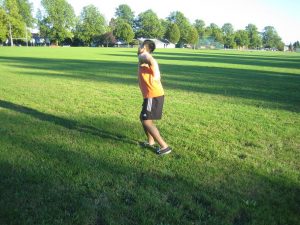Fibrositis is inflammation of the muscle sheaths, muscles and connective-tissue layers of the bone, muscles, tendons and joints. It affects the muscular areas of the lower back, neck, shoulder, arm, hips, thighs and chest. Adults ages 30-60 years old are susceptible to this condition and affects women more than men.
https://www.youtube.com/watch?v=d688jgKDNu0
Symptoms of fibrositis
- Severe pain can be felt between the upper spine and one or both shoulder blades.
- Pain becomes severe on hot, windy days and after performing exercises.
- Pain can spread from the arm down to the elbow.

Take the prescribed over-the-counter pain medications such as acetaminophen, ibuprofen and aspirin to relieve the pain and mild discomfort. - Weakness and stiffness of the affected area
- Formation of nodules or localized areas that are tender when touched.
- Fatigue
- Sudden and painful spasms of the muscles when performing any activity
- Difficulty falling asleep
Causes and risk factors
- Autoimmune disorders or imbalance in the brain chemicals
- Muscle injuries
- Viral infections
- Stress
- Sleep disturbance
- Fatigue or overworking
- Exposure to cold or dampness
- Poor nutrition
- A previous history of disorders that cause inflammation of the joints such as polyarthritis.
Treatment
- Apply heat on the affected area to lessen the pain due to fibrositis. Wrap a warm compress or heating pad with a towel or cloth before placing on the area to prevent burns.
- Performing exercises in a heated pool to relax the spasms of the affected muscles. Manipulation and other forms of exercises can be done if there is spinal misalignment.
- Massage the painful area.
- Perform some relaxation techniques and meditation to lessen stress.
- Take the prescribed over-the-counter pain medications such as acetaminophen, ibuprofen and aspirin to relieve the pain and mild discomfort.
- Cortisone injections are administered into the “trigger points”
- Perform conditioning exercises and stretching exercises to relieve pain due to fibrositis.
- Avoid drinking alcohol and caffeine to prevent interruption with sleeping.
- Perform conditioning exercises and stretching exercises to relieve pain
Tips
- Maintain proper health of the shoulder muscle by performing gentle exercises for the upper torso regularly.
- Avoid straining the shoulder muscles such as lifting heavy weights.
- If persistent pain in the upper back and shoulders arises, it should be treated as soon as possible.
